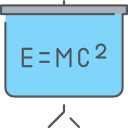
Skripsi
ANALISIS PENGARUH PENERAPAN BIAYA KUALITAS TERHADAP PENGENDALIAN KUALITAS PRODUK PADA PT. TORASAKTI INDOTAMA TEGAL
Indonesia :
Wahyu Anggoro. "Analisis Pengaruh Penerapan Biaya Kualitas Terhadap Pengendalian Kualitas Produk Pada PT. Torasakti Indotama Tegal. Skripsi.
Tujuan dari penelitian ini adalah untuk mengetahui tingkat kecacatan produk masih berada dalam batas pengendalian berdasarkan Statistical Quality Control, untuk mengetahui pengaruh secara simultan biaya pencegahan dan biaya penilaian terhadap produk cacat di PT. Torasakti Indotama Tegal, dan untuk mengetahui pengaruh secara parsial biaya pencegahan dan biaya penilaian terhadap produk cacat di PT. Torasakti Indotama Tegal.
Metode pengumpulan data yang digunakan dalam penelitian ini adalah metode dokumentasi. Sedangkan metode analisis yang digunakan adalah analisis Statistical Quality Control, analisis regresi berganda, uji t dan uji F.
Pada tahun 2008 process average adalah 0,02992 dan tidak ada produk rusak yang melebihi batas pengendalian atas (UCL) karena masih berada dalam batas-batas pengendalian yaitu 0,03389 sampai dengan 0,02604, Pada tahun 2009 process average adalah 0,01832 dan produk rusak yang melebihi batas pengendalian atas (UCL) yaitu sebesar 0,02986 terjadi pada bulan Maret dan bulan April yaitu sebesar 0,03147 dan 0,03336, yang lain masih berada dalam batas-batas pengendalian yaitu 0,00300 sampai dengan 0,02986. Berdasarkan hasil perhitungan regresi linier berganda diperoleh nilai b1= 0,000 dan b2 = - 4,3. Arti koefisien b1= 0,000 adalah biaya pencegahan menjadi biaya tetap. Berapapun produk cacat yang terjadi di PT. Torasakti Indotama Tegal, perusahaan tetap mengeluarkan biaya untuk biaya pencegahan berupa pemeliharaan mesin. Arti koefisien b2= - 4,3 adalah terdapat pengaruh negatif antara biaya penilaian terhadap produk cacat. Jadi jika biaya penilaian meningkat maka akan menurunkan produk cacat atau sebaliknya, jika biaya penilaian menurun, maka akan meningkatkan produk cacat. Konstanta sebesar 1,493,235 berarti jika tidak ada biaya pencegahan dan biaya penilaian maka produk cacat yang terjadi di PT. Torasakti Indotama Tegal adalah sebanyak 1,493,235. Dari hasil perhitungan di atas, diketahui nilai Fhitung = 40,533 sedangkan nilai Ftabel dengan (n-2 = 22) dan signifikasi 0,05 adalah 3,44. Dengan demikian Fhitung >Ftabel maka maka Ho ditolak dan Ha diterima yang berarti terdapat pengaruh yang signifikan antara biaya pencegahan dan biaya penilaian terhadap produk cacat. Dari hasil perhitungan, diketahui untuk variabel X1, nilai thitung = -3,246 sedangkan nilai ttabel dengan (n-2 = 22) dan signifikasi 0,05 adalah 2,07. Dengan demikian thitung > ttabel maka maka Ho ditolak dan H1 diterima yang berarti terdapat pengaruh yang signifikan antara biaya pencegahan terhadap produk cacat. Untuk variabel X2, nilai thitung = -2,093 sedangkan nilai ttabel dengan (n-2 = 22) dan signifikasi 0,05 adalah -2,07. Dengan demikian thitung > ttabel maka maka Ho ditolak dan H1 diterima yang berarti terdapat pengaruh yang signifikan antara biaya penilaian terhadap produk cacat. Dari hasil perhitungan koefisien determinasi diketahui nilai r2 = 0,794. Artinya biaya kualitas yang terdiri dari biaya pencegahan dan penilaian memberikan kontribusi atau sumbangan terhadap produk cacat sebesar 79,4 %. Sedangkan sisanya sebesar 20,6% dipengaruhi oleh faktor lain yang tidak dapat dijelaskan
English :
Wahyu Anggoro. "Analysis of Influence of Implementation of Quality Cost Of Quality Control Products In PT. Torasakti Indotama Tegal.
The purpose of this research was to determine the level of product defects is within the control based on Statistical Quality Control, to determine the influence simultaneously the cost of prevention and appraisal costs of product defects in PT. Torasakti Indotama Tegal, and to know the effect of the partial costs of prevention and appraisal costs on defective product at PT. Torasakti Indotama Tegal.
Data collection method used in this research is a method of documentation. While the method of analysis used is the analysis of Statistical Quality Control, multiple regression analysis, t test and F test
In 2008, the process average is 0.02992 and no defective products that exceed the upper control limit (UCL) as still within the boundaries of control that is 0.03389 to 0.02604, In 2009 the process average is 0.01832 and defective products that exceed the upper control limit (UCL) that is equal to 0.02986 occurred in March and April of that is equal to 0.03147 and 0.03336, others still within the boundaries of control that is 0.00300 to 0, 02 986. Based on the results of multiple linear regression calculations obtained value b1 = 0.000 and b2 = - 4.3. Meaning of coefficient b1 = 0.000 is the cost of prevention becomes a fixed cost. Regardless of the product defects that occur in the PT. Torasakti Indotama Tegal, the company continues to pay for the cost of prevention such as maintenance of machinery. Meaning of coefficient b2 = - 4.3 is there a negative effect of the cost assessment of the product defect. So if the cost of assessment increases it will lower product defect or otherwise, if the cost of assessment decreases, it will increase product defects. Constants of 1,493,235 means that if no cost of prevention and appraisal costs, the product defects that occur in the PT. Indotama Torasakti Tegal totaled 1,493,235. From the calculation above, note the value Fcount = 40.533 while Ftable value with (n-2 = 22) and 0.05 significance is 3.44. Thus Fcount> Ftable then it is Ho refused and Ha is received, which means a significant difference between the cost of prevention and appraisal costs of product defects. From the calculation, is known for the variable X1, tcount ttable = -3.246 while the value of (n-2 = 22) and 0.05 significance is 2.07. Thus tcount> ttable then so Ho rejected and H1 accepted meaning there is significant relationship between costs of prevention of defective products. For the variables X2, the value t count = -2.093 while the value ttable with (n-2 = 22) and 0.05 significance is -2.07. Thus tcount> ttable then so Ho rejected and H1 accepted which means a significant difference between the cost assessment of the product defect. The calculation of the coefficient of determination r2 = 0.794 note value. This means that quality costs consist of costs of prevention and assessment of contributions or donations to the defective product at 79.4%. The remaining 20.6% is influenced by other factors that can not be explained
Ketersediaan
| 822011KI40 | Tersedia |
Informasi Detail
- Judul Seri
-
-
- No. Panggil
-
-
- Penerbit
- : ., 2011
- Deskripsi Fisik
-
-
- Bahasa
-
English
- ISBN/ISSN
-
-
- Klasifikasi
-
-
- Tipe Isi
-
-
- Tipe Media
-
-
- Tipe Pembawa
-
-
- Edisi
-
-
- Subjek
- Info Detail Spesifik
-
-
- Pernyataan Tanggungjawab
-
-
Versi lain/terkait
Tidak tersedia versi lain
Lampiran Berkas
Komentar
Anda harus masuk sebelum memberikan komentar
 Karya Umum
Karya Umum  Filsafat
Filsafat  Agama
Agama  Ilmu-ilmu Sosial
Ilmu-ilmu Sosial  Bahasa
Bahasa  Ilmu-ilmu Murni
Ilmu-ilmu Murni  Ilmu-ilmu Terapan
Ilmu-ilmu Terapan  Kesenian, Hiburan, dan Olahraga
Kesenian, Hiburan, dan Olahraga  Kesusastraan
Kesusastraan  Geografi dan Sejarah
Geografi dan Sejarah